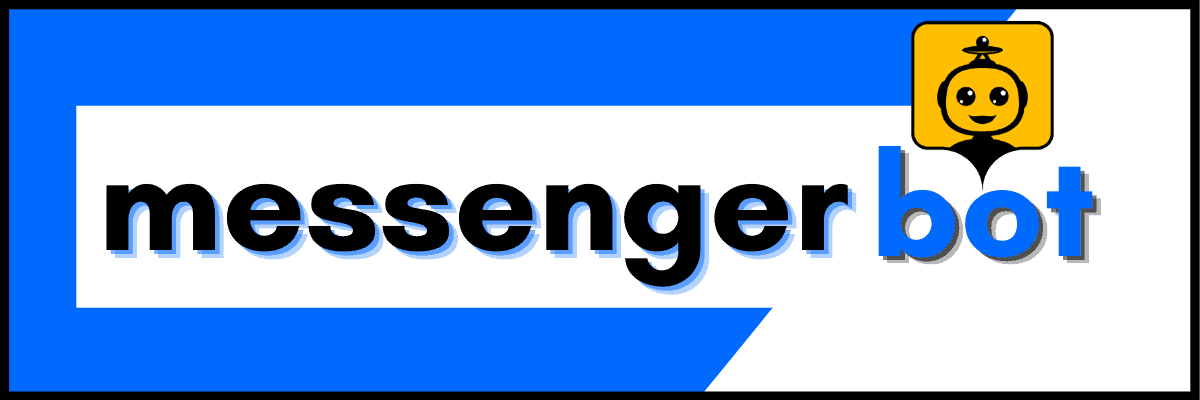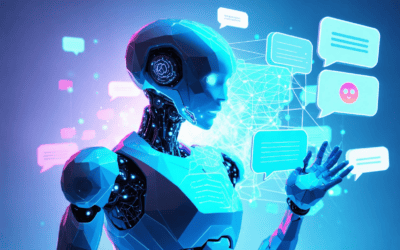In today’s fast-paced digital marketplace, implementing a chatbot for e-commerce has become a game-changer for online businesses seeking to enhance customer experience and boost sales. As consumers increasingly demand instant support and personalized interactions, chatbots have emerged as powerful tools to meet these expectations. From streamlining customer service to facilitating seamless transactions, chatbots in e-commerce are revolutionizing the way online stores operate. This comprehensive guide will explore how leveraging the best chatbot for e-commerce can skyrocket your sales, examine top ecommerce chatbot examples, and provide insights into choosing and implementing the right chat bot ecommerce solution for your business. Whether you’re a small startup or an established enterprise, discover how chatbots for businesses can transform your online presence and drive growth in the competitive world of e-commerce.
Unlocking the Potential of Chatbots in E-commerce
E-commerce has revolutionized the way we shop, and now chatbots are transforming how online businesses interact with their customers. As a leading provider of AI-powered communication solutions, we’ve seen firsthand how chatbots for e-commerce are becoming indispensable tools for businesses of all sizes.
Can chatbots be used for e-commerce?
Absolutely! Chatbots in e-commerce are not just a possibility; they’re becoming a necessity. These AI-powered assistants can handle a wide range of tasks, from answering customer queries to providing personalized product recommendations. Here’s how chatbots are making a significant impact in the e-commerce landscape:
- 24/7 Customer Support: Chatbots provide instant responses to customer inquiries, regardless of the time or day.
- Personalized Shopping Experience: By analyzing customer data, chatbots can offer tailored product suggestions, enhancing the shopping journey.
- Streamlined Checkout Process: Chatbots can guide customers through the purchasing process, reducing cart abandonment rates.
- Order Tracking: Customers can easily track their orders through chatbot interactions, reducing the load on human customer service representatives.
With the integration of advanced features like natural language processing, chatbots are becoming increasingly sophisticated, capable of understanding and responding to complex customer needs in the e-commerce space.
Benefits of implementing chatbots for online businesses
Implementing chatbots in your e-commerce strategy can yield numerous benefits. Here are some key advantages that make chatbots an attractive option for online businesses:
- Cost Reduction: By automating customer interactions, chatbots significantly reduce operational costs associated with customer service.
- Increased Sales: Chatbots can proactively engage customers, offer product recommendations, and even upsell, potentially boosting your revenue.
- Improved Customer Satisfaction: With instant responses and personalized assistance, chatbots enhance the overall customer experience.
- Data Collection: Chatbots gather valuable customer data, providing insights that can inform business strategies and improve products or services.
- Scalability: Unlike human agents, chatbots can handle multiple conversations simultaneously, allowing businesses to scale their customer service effortlessly.
At Messenger Bot, we’ve developed our platform to harness these benefits, enabling businesses to create sophisticated chatbots that drive engagement and sales. Our free trial offer allows you to experience firsthand how our chatbot solutions can transform your e-commerce operations.
As the e-commerce landscape continues to evolve, chatbots are becoming an integral part of successful online businesses. By leveraging the power of AI and automation, e-commerce chatbots are not just enhancing customer service but are also becoming powerful tools for business growth and customer retention.

Choosing the Right AI Chatbot for Your E-commerce Platform
In today’s competitive e-commerce landscape, selecting the right chatbot for ecommerce can be a game-changer for your business. As we navigate the myriad of options available, it’s crucial to understand which solutions can best serve your unique needs and enhance your customer experience.
What is the best AI chatbot for eCommerce?
When it comes to determining the best AI chatbot for eCommerce, there’s no one-size-fits-all solution. However, our Messenger Bot stands out as a top contender, offering a robust set of features tailored specifically for e-commerce businesses. With its advanced AI capabilities, multilingual support, and seamless integration with popular platforms, it’s designed to elevate your customer interactions and drive sales.
Other notable options in the market include Zendesk’s AI chatbot, which is known for its customer service prowess, and Shopify’s native chatbot solutions for those already using their platform. Each of these offers unique strengths, but we believe our solution provides the most comprehensive package for e-commerce needs.
Comparing top e-commerce chatbot solutions
When comparing chatbots for e-commerce, it’s essential to consider several factors:
1. AI Capabilities: Look for chatbots with advanced natural language processing to understand and respond to customer queries accurately.
2. E-commerce Integration: The ability to seamlessly integrate with your existing e-commerce platform is crucial. Our Messenger Bot integrates effortlessly with various e-commerce systems, making it a versatile choice.
3. Customization: The best chatbots allow for extensive customization to match your brand voice and specific business needs.
4. Multilingual Support: In a global marketplace, multilingual capabilities are invaluable. Our chatbot excels in this area, supporting conversations in multiple languages.
5. Analytics and Reporting: Robust analytics help you understand customer interactions and optimize your chatbot’s performance over time.
6. Scalability: As your business grows, your chatbot should be able to handle increased traffic and more complex interactions.
While competitors like ManyChat and MobileMonkey offer solid solutions, we’ve designed our Messenger Bot to excel in all these areas, providing a comprehensive tool that grows with your business.
By carefully evaluating these factors and considering your specific business needs, you can select a chatbot that not only meets your current requirements but also supports your future growth in the dynamic world of e-commerce.
III. Developing a Custom E-commerce Chatbot
Creating a custom chatbot for e-commerce can significantly enhance your online business operations. By tailoring a chatbot to your specific needs, you can provide personalized customer experiences, streamline sales processes, and boost overall efficiency. Let’s explore how to develop an e-commerce chatbot and examine some best practices.
A. How do I create an eCommerce chatbot?
Developing an eCommerce chatbot involves several key steps:
1. Define your objectives: Determine the primary goals for your chatbot, such as customer support, product recommendations, or order tracking.
2. Choose a platform: Select a chatbot development platform that suits your needs. Options include Messenger Bot, which offers advanced AI-driven features for e-commerce businesses.
3. Design conversation flows: Map out the potential interactions between customers and your chatbot, ensuring a logical and helpful conversation structure.
4. Integrate with your e-commerce platform: Connect your chatbot to your existing e-commerce system to access product information, inventory, and customer data.
5. Train your chatbot: Input relevant data and responses to help your chatbot understand and address customer queries effectively.
6. Test and refine: Continuously test your chatbot’s performance and make necessary adjustments to improve its functionality and user experience.
7. Launch and monitor: Deploy your chatbot and closely monitor its interactions with customers, gathering feedback for ongoing improvements.
B. E-commerce chatbot examples and best practices
To inspire your chatbot development, let’s look at some ecommerce chatbot examples and best practices:
1. Personalized product recommendations: Implement AI-driven algorithms to analyze customer preferences and browsing history, offering tailored product suggestions. For instance, Sephora’s chatbot provides personalized beauty product recommendations based on customer profiles.
2. Order tracking and updates: Enable customers to track their orders and receive real-time updates through the chatbot. Domino’s Pizza chatbot allows customers to track their pizza orders from preparation to delivery.
3. Instant customer support: Provide quick responses to frequently asked questions and offer seamless handoffs to human agents for complex issues. H&M’s chatbot efficiently handles customer inquiries and directs users to relevant product pages.
4. Streamlined checkout process: Guide customers through the purchasing journey, from product selection to payment. 1-800-Flowers uses a chatbot to help customers select and purchase floral arrangements with ease.
5. Multilingual support: Implement multilingual capabilities to cater to a global customer base. This approach can significantly expand your market reach and improve customer satisfaction.
Best practices for e-commerce chatbots include:
– Maintaining a conversational tone that aligns with your brand voice
– Providing clear options and guidance throughout the interaction
– Offering easy access to human support when needed
– Continuously updating your chatbot’s knowledge base
– Respecting user privacy and data protection regulations
By following these examples and best practices, you can create a powerful chatbot for your e-commerce business that enhances customer experience, drives sales, and improves operational efficiency. Remember to regularly analyze your chatbot’s performance and gather user feedback to ensure ongoing improvement and success in your e-commerce endeavors.
IV. Integrating Chatbots with Popular E-commerce Platforms
Integrating chatbots with popular e-commerce platforms has become a game-changer for online businesses. As a leading provider of chatbot solutions, we’ve seen firsthand how these AI-powered assistants can transform customer interactions and boost sales. Let’s explore how you can seamlessly incorporate chatbots into your e-commerce ecosystem, with a special focus on Shopify and its alternatives.
A. Does Shopify have a chatbot?
Yes, Shopify does offer chatbot functionality through various apps and integrations. As one of the most popular e-commerce platforms, Shopify recognizes the importance of AI-driven customer service in enhancing the shopping experience. While Shopify doesn’t have a native chatbot built into its core platform, it provides a robust app ecosystem that allows merchants to easily add chatbot capabilities to their stores.
Some of the popular chatbot options available for Shopify include:
1. Shopify Inbox: This is Shopify’s own messaging app that includes basic chatbot features for automated responses.
2. Third-party apps: The Shopify App Store offers a wide range of chatbot solutions that can be integrated with your store, such as Messenger Bot, Tidio, and Gobot.
3. Custom integrations: For more advanced needs, you can develop custom chatbot solutions using Shopify’s API and integrate them with your store.
B. Exploring Shopify chatbot options and alternatives
While Shopify provides excellent chatbot options, it’s essential to explore alternatives to find the best fit for your e-commerce business. Here are some top chatbot solutions that work well with Shopify and other e-commerce platforms:
1. Messenger Bot: Our AI-powered chatbot platform offers seamless integration with Shopify and other e-commerce sites. It provides advanced features like multilingual support and customizable workflows to enhance customer engagement.
2. Zendesk: Known for its comprehensive customer service solutions, Zendesk offers chatbot functionality that can be integrated with various e-commerce platforms.
3. Intercom: This customer messaging platform provides AI-powered chatbots that can be easily integrated with Shopify and other e-commerce sites.
4. Drift: Primarily focused on conversational marketing, Drift’s chatbots can be valuable for e-commerce businesses looking to generate leads and drive sales.
When choosing a chatbot solution for your e-commerce platform, consider factors such as ease of integration, customization options, and scalability. It’s crucial to select a chatbot that aligns with your business goals and can grow with your online store.
For instance, our Messenger Bot platform offers a range of features specifically designed for e-commerce, including product recommendations, order tracking, and abandoned cart recovery. These capabilities can significantly enhance the customer experience and drive conversions on your Shopify store or any other e-commerce platform.
By leveraging the right chatbot solution, you can automate customer support, personalize shopping experiences, and ultimately boost your e-commerce sales. Whether you’re using Shopify or another platform, integrating a chatbot is a smart move to stay competitive in the ever-evolving world of online retail.

V. Free Chatbot Solutions for E-commerce Websites
As an e-commerce business owner, I understand the importance of providing excellent customer service while keeping costs in check. That’s why free chatbot solutions for e-commerce websites have become increasingly popular. These tools offer a cost-effective way to enhance customer engagement and streamline operations.
When considering chatbots for e-commerce, it’s crucial to evaluate the available free options carefully. Many platforms offer basic functionalities at no cost, allowing businesses to test the waters before committing to a paid solution. These free chatbots can handle simple queries, provide product information, and even assist with basic order tracking.
A. Evaluating free chatbot for ecommerce options
When evaluating free chatbot options for your e-commerce site, consider the following factors:
1. Customization: Look for platforms that allow you to tailor the chatbot’s responses and appearance to match your brand.
2. Integration: Ensure the chatbot can integrate seamlessly with your existing e-commerce platform, such as Shopify or WooCommerce.
3. Scalability: Choose a solution that offers the potential to upgrade to more advanced features as your business grows.
4. Natural Language Processing (NLP): Opt for chatbots with robust NLP capabilities to understand and respond to customer queries accurately.
5. Multi-channel support: Select a chatbot that can operate across various platforms, including your website, Facebook Messenger, and WhatsApp.
Some popular free chatbot options for e-commerce include ManyChat, which offers a free plan with basic features, and Tidio, which provides a free tier with limited conversations per month. These platforms can be excellent starting points for businesses looking to implement chatbots in e-commerce without a significant upfront investment.
B. Implementing a free chatbot for ecommerce website
Implementing a free chatbot for your e-commerce website can be a straightforward process:
1. Choose your platform: Select a free chatbot solution that aligns with your business needs and technical capabilities.
2. Set up your account: Create an account on the chosen platform and follow their setup instructions.
3. Design your chatbot flow: Map out the conversation paths your chatbot will follow, including greetings, FAQs, and product recommendations.
4. Customize responses: Tailor your chatbot’s messages to reflect your brand voice and address common customer inquiries.
5. Test thoroughly: Before going live, test your chatbot extensively to ensure it’s functioning correctly and providing accurate information.
6. Install on your website: Follow the platform’s instructions to add the chatbot to your e-commerce site, usually involving a simple code snippet.
7. Monitor and optimize: Regularly review chatbot interactions and make improvements based on customer feedback and performance data.
When implementing a free chatbot for business use, it’s essential to set realistic expectations. While free options can provide significant value, they may have limitations compared to paid solutions. As your business grows, you might consider upgrading to a more advanced chatbot platform like Messenger Bot, which offers enhanced features and customization options.
By leveraging free chatbot solutions, e-commerce businesses can improve customer service, increase engagement, and potentially boost sales without a significant financial investment. As you explore these options, remember that the key to success lies in choosing a solution that aligns with your business goals and provides a seamless experience for your customers.
VI. Advanced Chatbot Strategies for Business Growth
As we continue to explore the potential of chatbots in e-commerce, it’s crucial to delve into advanced strategies that can drive significant business growth. By leveraging chatbots for businesses, we can enhance customer experience and utilize these powerful tools for lead generation and sales. Let’s examine how these advanced techniques can revolutionize your e-commerce operations.
A. Leveraging chatbots for businesses to enhance customer experience
Chatbots have become indispensable tools for businesses looking to elevate their customer experience. By implementing a sophisticated chatbot for e-commerce, companies can provide instant, personalized support to their customers 24/7. This constant availability ensures that potential buyers can get answers to their questions at any time, reducing friction in the purchasing process.
One of the key advantages of using chatbots in e-commerce is their ability to handle multiple customer inquiries simultaneously. This scalability allows businesses to manage high volumes of customer interactions without compromising on quality or response time. For instance, during peak shopping seasons or flash sales, a well-designed chatbot can efficiently manage a surge in customer queries, maintaining a high level of service that would be challenging for human agents alone.
Moreover, chatbots for businesses can be programmed to offer personalized product recommendations based on customer preferences and browsing history. This level of customization not only enhances the shopping experience but also increases the likelihood of conversions. By analyzing customer data and behavior patterns, chatbots can suggest relevant products, upsell, and cross-sell effectively, driving revenue growth for e-commerce businesses.
Another advanced strategy is the integration of natural language processing (NLP) capabilities into e-commerce chatbots. This technology enables chatbots to understand and respond to customer queries in a more human-like manner, making interactions feel more natural and engaging. For example, Shopify offers chatbot solutions that utilize NLP to provide a seamless customer service experience, demonstrating the power of this technology in enhancing customer satisfaction.
B. Utilizing business chatbots for lead generation and sales
Beyond customer service, chatbots are proving to be powerful tools for lead generation and sales in the e-commerce sector. By implementing strategic conversational flows, businesses can use chatbots to qualify leads, gather valuable customer information, and guide potential buyers through the sales funnel.
One effective strategy is to use chatbots to conduct initial customer surveys or questionnaires. This approach allows businesses to collect crucial data about customer preferences, pain points, and buying intentions. With this information, sales teams can follow up with more targeted and personalized approaches, significantly increasing the chances of conversion.
Chatbots for e-commerce can also be programmed to identify high-intent visitors on a website and engage them with tailored offers or promotions. For instance, if a visitor spends a considerable amount of time browsing a particular product category, the chatbot can initiate a conversation offering a limited-time discount or providing additional information about the products, thereby nudging the potential customer towards a purchase.
Furthermore, business chatbots can be integrated with CRM systems to streamline the lead nurturing process. By automatically logging customer interactions and preferences, chatbots provide sales teams with valuable insights that can be used to craft more effective follow-up strategies. This integration ensures a smooth handover from automated interactions to human sales representatives when necessary, maintaining a cohesive customer journey.
Another innovative use of chatbots in lead generation is through social media platforms. For example, ManyChat offers solutions that allow businesses to create chatbots for Facebook Messenger, enabling them to engage with potential customers directly on social media. This approach can be particularly effective for capturing leads from social media advertising campaigns and converting social media followers into customers.
In conclusion, by leveraging advanced chatbot strategies, e-commerce businesses can significantly enhance their customer experience, generate quality leads, and drive sales growth. As AI technology continues to evolve, the potential for chatbots in e-commerce is boundless, offering exciting opportunities for businesses to innovate and stay ahead in the competitive online marketplace.
VII. Future Trends in E-commerce Chatbot Technology
The future of e-commerce chatbot technology is rapidly evolving, with innovations that promise to revolutionize the way businesses interact with customers. As we look ahead, it’s clear that chatbots for e-commerce will become increasingly sophisticated, offering more personalized and efficient shopping experiences.
One of the most exciting developments is the integration of advanced artificial intelligence and machine learning algorithms. These technologies are enabling chatbots to understand context, sentiment, and intent more accurately, leading to more natural and human-like conversations. This evolution will allow chatbots to handle complex queries and provide more nuanced recommendations, further blurring the line between automated and human customer service.
Another trend we’re seeing is the increased use of voice-activated chatbots. With the rising popularity of smart speakers and voice assistants, e-commerce businesses are adapting their chatbots to support voice commands. This hands-free shopping experience is particularly appealing for busy consumers who want to multitask or those with accessibility needs.
A. Exploring e-commerce chatbot python github resources
For developers looking to stay ahead of the curve, exploring e-commerce chatbot Python GitHub resources is an excellent way to tap into cutting-edge innovations. GitHub hosts a wealth of open-source projects and libraries that can be leveraged to create sophisticated chatbots for e-commerce platforms.
One notable resource is the Rasa framework, which offers powerful tools for building contextual AI assistants. Rasa’s open-source nature allows developers to create custom chatbots tailored to specific e-commerce needs, from product recommendations to order tracking.
Another valuable GitHub resource is the Botpress platform, which provides a visual development environment for creating complex chatbots. Its modular architecture makes it particularly suitable for e-commerce applications, allowing for easy integration with existing systems.
For those interested in natural language processing (NLP), the Hugging Face Transformers library is an invaluable tool. It offers state-of-the-art models that can be fine-tuned for e-commerce-specific tasks, such as product classification or sentiment analysis of customer reviews.
By leveraging these Python-based GitHub resources, developers can create more intelligent and responsive chatbots for e-commerce, staying at the forefront of this rapidly evolving technology.
B. Innovations in AI-powered chat bot ecommerce solutions
The landscape of AI-powered chatbot ecommerce solutions is constantly expanding, with new innovations emerging regularly. These advancements are set to transform the online shopping experience, making it more intuitive, personalized, and efficient.
One of the most significant innovations is the integration of predictive analytics. By analyzing vast amounts of data, including browsing history, purchase patterns, and even social media activity, AI-powered chatbots can anticipate customer needs and preferences. This allows for highly personalized product recommendations and targeted promotions, potentially increasing conversion rates and customer satisfaction.
Another exciting development is the use of augmented reality (AR) in chatbot interactions. Messenger Bot is at the forefront of this trend, exploring ways to incorporate AR features into our chatbot solutions. Imagine a customer asking about a piece of furniture, and the chatbot not only providing information but also showing how it would look in the customer’s room through AR visualization.
We’re also seeing advancements in emotional intelligence capabilities. AI-powered chatbots are becoming better at detecting and responding to customer emotions, allowing for more empathetic and nuanced interactions. This is particularly valuable in handling customer service issues or guiding customers through complex purchasing decisions.
The integration of chatbots with other e-commerce systems is another area of innovation. For instance, Shopify has been expanding its chatbot capabilities, allowing for seamless integration with inventory management, order processing, and customer relationship management systems. This holistic approach ensures that chatbots can provide accurate, real-time information and execute transactions efficiently.
As we continue to innovate in this space, we’re excited about the potential of AI-powered chatbots to create more engaging, personalized, and frictionless shopping experiences. The future of e-commerce is conversational, and chatbots are at the heart of this transformation.




